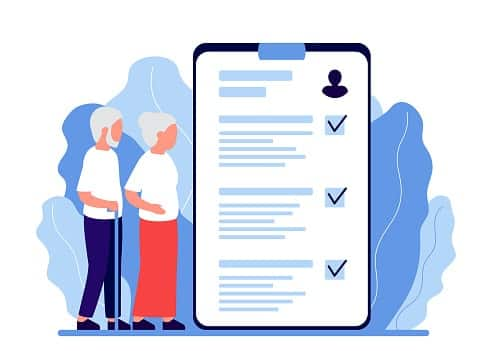Stimulus package lowers ACA plan costs for two years
The ACA marketplace offers health plans to Americans who can’t get coverage elsewhere, such as through an employer.
The marketplace provides subsidies and tax credits to help people pay for ACA plans. The stimulus package gives more help to people with ACA plan costs, including those who usually don’t qualify for tax credits and subsidies. Usually, people with household income below 400% of the federal poverty level qualify for ACA plan assistance. The stimulus package removed that requirement.
The law ended the household income cap for tax credits for two years. Instead, ACA plan members will temporarily pay as much as 8.5% of their income on plan premiums regardless of household income. Previously, premiums cost 9.83% of household income for those who qualified for tax credits.
The Centers for Medicare and Medicaid Services estimated that ACA premiums will decrease by $50 per person per month and $85 per policy per month on average for the next two years. Kaiser Family Foundation has a Health Insurance Marketplace Calculator that lets you enter your information to see what you may pay for a Silver ACA plan based on your state, income, age and family size.
The Biden administration also recently launched an open enrollment period for the ACA marketplace. The special open enrollment runs until May 15 in most states in hopes of getting coverage for people who lost their jobs because of COVID-19.
Stimulus package pays COBRA payments until September
The American Rescue Plan of 2021 will pay 100% of COBRA coverage through September for those recently laid off because of the COVID-19 economic situation. After September, COBRA plan members will pay the full cost for COBRA insurance coverage again.
COBRA is allowed for former employees of companies with at least 20 employees. People with employer-sponsored health insurance who lose their jobs are eligible to keep their former employer’s plan for at least 18 months.
There’s one expensive catch, though. The plan members pay the entire COBRA premium without help from their former employers. The average annual premium for employer-sponsored health insurance family coverage was about $22,000 in 2020. Employees pick up about one-quarter of that premium. Without help from your former employer, COBRA members pay the full amount and up to a 2% administrative fee.
The stimulus plan will take care of those costs through September.
The plan also gives eligible people a 60-day window to decide whether to choose a COBRA plan starting on April 1. So, even if you previously declined a COBRA plan, you will have another shot to get one.
However, people eligible for Medicare or another group health plan, such as getting added to a spouse’s health insurance, won’t be able to get the COBRA subsidy.
Contact your former employer about the COBRA subsidies.
Alternatives to ACA plans and COBRA health insurance
The stimulus package helps lower costs for ACA marketplace and COBRA plans, which are traditionally pricey. However, you may find other options that fit your situation better.
Other health plan options include:
- An individual health insurance plan outside of the ACA marketplace - Insurance companies often directly offer individual and family plans outside of the marketplace. These plans may not provide the same coverage level found in an ACA plan, but they are often more affordable. Check with health insurers in your area to see if they offer individual plans directly to consumers.
- A spouse’s employer-sponsored health plan - If your spouse can get coverage through a job, you may pay less than getting a COBRA or ACA plan. Ask your spouse to check with the employer to see how much it would cost to have you added to a health plan. Going from single to family coverage may more than double premium costs, so you’ll want to compare those costs with other options.
- A catastrophic health plan - The ACA marketplace offers low-cost catastrophic health insurance to people under 30 and those who qualify for financial hardship, such as being homeless. These plans have comprehensive coverage and low premiums, so it costs little to have this coverage. However, catastrophic health insurance has high out-of-pocket costs when you need care.
- A short-term health plan - Short-term health insurance is meant as a low-cost way to bridge a coverage gap, such as between jobs. These plans are available in most states, though some states ban or limit them. Insurance companies often offer short-term plans for a year with the option to extend coverage for three years. These low-cost plans have limited coverage, including rarely covering prescription drugs, mental health and maternity care. Short-term health plans can also have significant out-of-pocket costs when you need care.
If you’re looking for a health plan, make sure to check the fine print and that your providers accept the health coverage. Otherwise, you may pay for all of the costs for those health care services.




